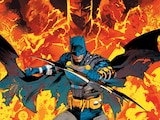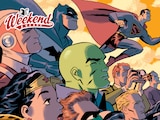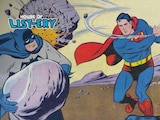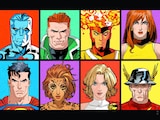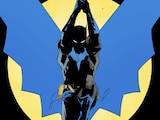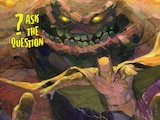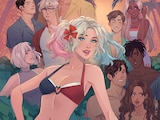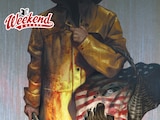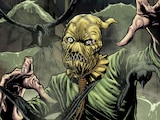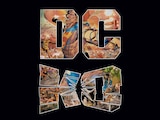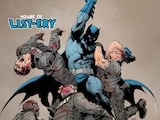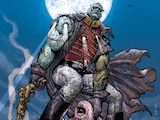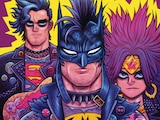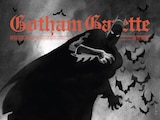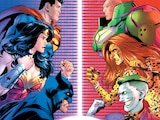No superhero works alone. And arguably, no comic book writer understands this fact better than Tom King, the acclaimed scribe behind many of DC’s most acclaimed comics of the past decade. Batman and Catwoman! Harley Quinn and Poison Ivy! Mister Miracle and Big Barda! Now it’s Dinah Lance’s turn, but while this week’s Black Canary: Best of the Best would seem to be about her rivalry with Lady Shiva, the miniseries also unpacks the complex mother/daughter bond between the two women who have carried the Black Canary mantle. Recently, we spoke with King about his approach to writing one of DC’s longest running legacy characters, why we won’t be seeing much of Oliver Queen and which storied writer didn’t influence him when scripting Lady Shiva.

Reading Black Canary: Best of the Best #1, it becomes rather clear that the story is more focused on Dinah and her mother, than simply Canary and Shiva. Would you say the fight is kind of a Trojan Horse for this look at their mother/daughter relationship?
The book’s both! It’s a badass, slugfest fight that also draws on the emotional connection between a mother and daughter. For this, I was inspired by my two daughters and by my son who is a huge wrestling fan. So, this is almost combining my two children for this complete story.
When superheroes fight, it’s mostly about skill. But to survive the fight and take the pain, it becomes less about skill and more about soul. The thing in you that drives you into the ground and makes you want to give up, but to get off the ground anyway—that stuff comes from how you were raised and who raised you. That’s what I wanted to get at, what formed Dinah’s soul.

The original Black Canary goes back to the Golden Age of comics. She’s not referred to all that often in modern comics. Did those old stories inform how you approached the character in Best of the Best?
I did go back and read the Golden Age stuff. People forget that the Black Canary character goes back to the Bob Kanigher days of DC. She’s a 1947 debut, about as old as Robin.
DC’s greatest strength to me, as someone who’s been writing for these characters for about a decade, is legacy. That’s what we’ve got over Marvel, the idea that our characters have older versions and younger versions of the hero name, and we can see how those characters interact with each other. In looking at Black Canary—and putting her up to a level of a Superman or Batman, which she deserves—I wanted to show her legacy story. Her key DC concept of what it means to live in the shadow of another parent or mentor, which in many ways can be seen as the classic DC story.

Speaking as someone who is a Green Arrow fan, it’s a compliment to Dinah that so far in the series, Ollie is only in one panel.
Yeah, as I’ve talked about before, I’ve written so many love stories. This is not that. Green Arrow appears in and out, about the same number of times as Wildcat. This is a story squarely about Dinah and her mother, and Dinah’s fight with Shiva. It’s not about love, it’s about parenting and fighting.
Speaking of Shiva, did the interaction between her and Dinah in Gail Simone’s Birds of Prey influence your approach in depicting them in this story?
I can’t say how much I love Gail’s run of Birds of Prey. I think it’s one of the all-time perfect runs. But I’m going to say no, and here’s why. Gail always adds layers to her characters and sympathies. That’s her gift. I’m designing a comic where the fight itself is—to use wrestling terms—a face and a heel. There’s a lack of subtlety in this relationship as opposed to how Gail would do it. The dynamic simply is that one is a better fighter than the other, but that lesser fighter can’t quit. This is a story about legacies. The fight’s pretty straightforward.
Black Canary: Best of the Best #1 by Tom King, Ryan Sook and Dave Stewart is available in stores this week.

